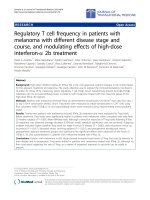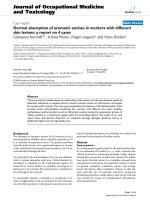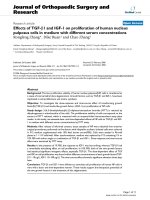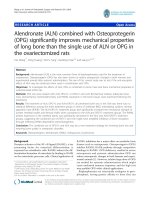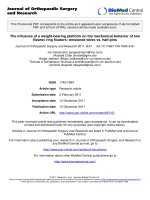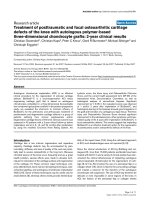Mechanical behavior of cement mortar with different polymer type
Bạn đang xem bản rút gọn của tài liệu. Xem và tải ngay bản đầy đủ của tài liệu tại đây (473.11 KB, 9 trang )
������������������������������������������������������������������������������������������������������������������������������������������������������������������������������������������������������������������������������������������������������������������������������������������������������������������������������������������������������������������������������������������������������������������������������������������������������������������������������������������������������������������������������������������������������������������������������������������������������������������������������������������������������������������������������������������������������������������������������������������������������������������������������������������������������������������������������������������������������������������������������������������������������������������������������������������������������������������������������������������������������������������������������������������������������������������������������������������������������������������������������������������������������������������������������������������������������������������������������������������������������������������������������������������������������������������������������������������������������������������������������������������������������������������������������������������������������������������������������������������������������������������������������������������������������������������������������������������������������������������������������������������������������������������������������������������������������������������������������������������������������������������������������������������������������������������������������������������������������������������������������������������������������������������������������������������������������������������������������������������������������������������������������������������������������������������������������������������������������������������������������������������������������������������������������������������������������������������������������������������������������������������������������������������������������������������������������������������������������������������������������������������������������������������������������������������������������������������������������������������������������������������������������������������������������������������������������������������������������������������������������������������������������������������������������������������������������������������������������������������������������������������������������������������������������������������������������������������������������������������������������������������������������������������������������������������������������������������������������������������������������������������������������������������������������������������������������������������������������������������������������������������������������������������������������������������������������������������������������������������������������������������������������������������������������������������������������������������������������������������������������������������������������������������������������������������������������������������������������������������������������������������������������������������������������������������������������������������������������������������������������������������������������������������������������������������������������������������������������������������������������������������������������������������������������������������������������������������������������������������������������������������������������������������������������������������������������������������������������������������������������������������������������������������������������������������������������������������������������������������������������������������������������������������������������������������������������������������������������������������������������������������������������������������������������������������������������������������������������������������������������������������������������������������������������������������������������������������������������������������������������������������������������������������������������������������������������������������������������������������������������������������������������������������������������������������������������������������������������������������������������������������������������������������������������������������������������������������������������������������������������������������������������������������������������������������������������������������������������������������������������������������������������������������������������������������������������������������������������������������������������������������������������������������������������������������������������������������������������������������������������������������������������������������������������������������������������������������������������������������������������������������������������������������������������������������������������������������������������������������������������������������������������������������������������������������������������������������������������������������������������������������������������������������������������������������������������������������������������������������������������������������������������������������������������������������������������������������������������������������������������������������������������������������������������������������������������������������������������������������������������������������������������������������������������������������������������������������������������������������������������������������������������������������������������������������������������������������������������������������������������������������������������������������������������������������������������������������������������������������������������������������������������������������������������������������������������������������������������������������������������������������������������������������������������������������������������������������������������������������������������������������������������������������������������������������������������������������������������������������������������������������������������������������������������������������������������������������������������������������������������������������������������������������������������������������������������������������������������������������������������������������������������������������������������������������������������������������������������������������������������������������������������������������������������������������������������������������������������������������������������������������������������������������������������������������������������������������������������������������������������������������������������������������������������������������������������������������������������������������������������������������������������������������������������������������������������������������������������������������������������������������������������������������������������������������������������������������������������������������������������������������������������������������������������������������������������������������������������������������������������������������������������������������������������������������������������������������������������������������������������������������������������������������������������������������������������������������������������������������������������������������������������������������������������������������������������������������������������������������������������������������������������������������������������������������������������������������������������������������������������������������������������������������������������������������������������������������������������������������������������������������������������������������������������������������������������������������������������������������������������������������������������������������������������������������������������������������������������������������������������������������������������������������������������������������������������������������������������������������������������������������������������������������������������������������������������������������������������������������������������������������������������������������������������������������������������������������������������������������������������������������������������������������������������������������������������������������������������������������������������������������������������������������������������������������������������������������������������������������������������������������������������������������������������������������������������������������������������������������������������������������������������������������������������������������������������������������������������������������������������������������������������������������������������������������������������������������������������������������������������������������������������������������������������������������������������������������������������������������������������������������������������������������������������������������������������������������������������������������������������������������������������������������������������������������������������������������������������������������������������������������������������������������������������������������������������������������������������������������������������������������������������������������������������������������������������������������������������������������������������������������������������������������������������������������������������������������������������������������������������������������������������������������������������������������������������������������������������������������������������������������������������������������������������������������������������������������������������������������������������������������������������������������������������������������������������������������������������������������������������������������������������������������������������������������������������������������������������������������������������������������������������������������������������������������������������������������������������������������������������������������������������������������������������������������������������������������������������������������������������������������������������������������������������������������������������������������������������������������������������������������������������������������������������������������������������������������������������������������������������������������������������������������������������������������������������������������������������������������������������������������������������������������������������������������������������������������������������������������������������������������������������������������������������������������������������������������������������������������������������������������������������������������������������������������������������������������������������������������������������������������������������������������������������������������������������������������������������������������������������������������������������������������������������������������������������������������������������������������������������������������������������������������������������������������������������������������������������������������������������������������������������������������������������������������������������������������������������������������������������������������������������������������������������������������������������������������������������������������������������������������������������������������������������������������������������������������������������������������������������������������������������������������������lectron micrographs of ordinary cement mortar in 28 days. It can be seen
that there are both more gel pores and capillary pores in the ordinary cement stones,
so it performs worse compactness.
FIG.9 shows micrographs of PVAc modified cement mortar in 28 days. As a kind
of high molecular material, PVAc almost combines with cement paste by physical
function, while enrichment area of PVAc are appearance during the polymer content
being added and overtaking the level. It may be caused by the different density of
polymer, cement and sand, and it also can be explained through the assumption of
Grosskurth that the polymer is pushed and concentrated by cement stone during
hydration process. With water evaporating and observed by other base materials, the
polymer particles interweaves with cement and hydration products through a
condensation reaction. This conclusion can be proved by the result of FIG. 9. It can be
seen that the presence of PVAc can reduce pores and increase the compactness of
mortar. Crosslinking network structure of polymer with other materials can improve
adhesion property of cement with sand, and toughness also can be increased.
Figure 8. Scanning electron micrographs of ordinary cement mortar.
Figure 9. Scanning electron micrographs of PVAC modified cement mortar.
CONCLUSIONS
Based on the laboratory test results and analysis of the modified mechanism, the
following conclusions were drawn.
a. Four types of polymer emulsion can improve mechanical properties of cement
mortar in a degree.
969
b. The SBR and PVAc latex can effectively increase the flexural strength of
cement mortar.
c. The PVAc latex modified cement mortar. The tensile strength of all modified
cement mortar were increased.
d. PVAc can interweave with cement and hydration products, and form
crosslinking network structure, which is useful to improve toughness of mortar.
ACKNOWLEDGEMENTS
The corresponding author of this paper is Huaxin Chen. The authors gratefully
acknowledge the Special Fund for Excellent Doctoral Dissertation Research of
Central Colleges, Chang’an University (NO. 310831150022) for financial support to
this work.
REFERENCES
Gengying Li, Guangjing Xiong, Yunhai lü, Yegao Yin (2009). “The physical and
chemical of long-term sulphuric acid exposure on hybrid modified cement mortar.”
Cement and Concrete Composite. Vol. 31: 325-330.
Y.K. Jo (2008). “Basic properties of epoxy cement mortars without hardener after
outdoor exposure. ” Construction and Building Materials.Vol. 22:911-920.
Ru wang, peiming wang(2008). “Application of polymer crylic ester latex to cement
mortar”. Journal of the Chinese Ceramic Society. Vol. 36(7): 946-949.
Yingjun Mei, Peimingwang, Zhiyong Li, et al (2009). “The bonding performance
between SBR modified cement mortar and substrate.” Journal of Xi,an University
of Architecture and Technology: Natural Science. Vol. 41(3): 404-408.
Xiao Liguang , Jin Yujie , Gu Lixia (2009). “Preparation and properties of a new
composite of epoxy emulsion (EEM) modified cement.” Journal of Wuhan
University Technology: Materials Science Edition. Vol. 24(5): 843-847.
Xuyao Ge (2005). “Study on the polymer modified high strength cement mortar.”
Hunan University.
Qi Xu and Peiming Wang (2001). “Physical properties of styrene-butadiene emulsion
modified cement mortar used for repair of bridge surface.” Journal of Building
Materials. Vol. 4(2): 143-147.
Fang Li, Yuying Yang, Feng Qin (2004). “Study on physeial properties of
styrene-butadiene emulsion modifled cement mortar.” Journal of Materials Science
and Engineering. Vol. 22(2): 254-258.
Xiangming Kong and Qihong Li (2009). “Properties and microstructure of polymer
modified mortar on different acrylate latexes.” Journal of the Chinese Ceramic
Society. Vol. 37(1): 107-114
Inkyu Rhee, Yoong Ahm Kim, Gun-Ok Shin, Ji Hoon Kim, Hiroyuki Muramatsu
(2015). “Compressive strength sensitivity of cement mortar using rice
husk-derived graphene with a high specific surface area.” Construction and
Building Materials. Vol. 96:189-197.
970
S. Aggoun, M. Chereikh-Zouaoui, N. Chikh, R. Duval (2008). “Effect of some
admixtures on the setting time and stngth evolution of cement pastes at early ages.”
Construction and Building Materials. Vol. 22: 106–110.
Niragi Dave, Anil Kumar Misra, Amit Srivastava, Surendra Kumar Kaushik (2016).
“Experimental analysis of strength and durability properties of quaternary cement
binder and mortar.” Construction and Building Materials. Vol. 107:117-124.
Pietro Boccal, Alessandro Grazzini (2013). Mechanical properties and freeze-thaw
durability of strengthening mortars. Journal of Materials in Civil Engineering. Vol.
23(5): 274-280.
Zhenping sun, danmei ye, lefeng fu, et al (2013). “Influence of air void content of
polymer modified cement mortar on mechanical properties.” Journal of Building
Materials. Vol. 16(4): 561-566.
Jian Li, Peiming Wang, Ru Wang (2005). “Mechanical properties and bulk density of
styrene-butadiene copolymer emulsion (sd622s) modified cement mortar.” Journal
of Building Materials. Vol. 8(6):705-709.
971


